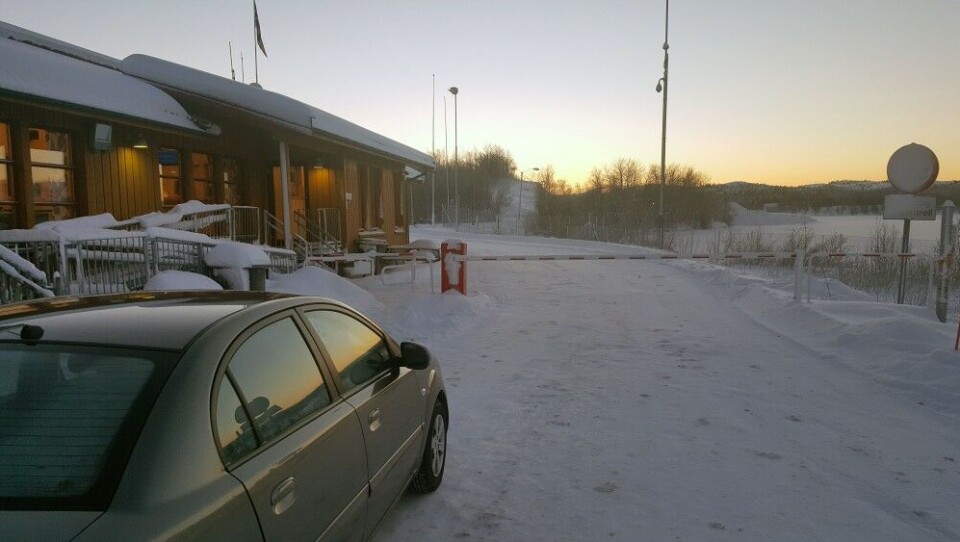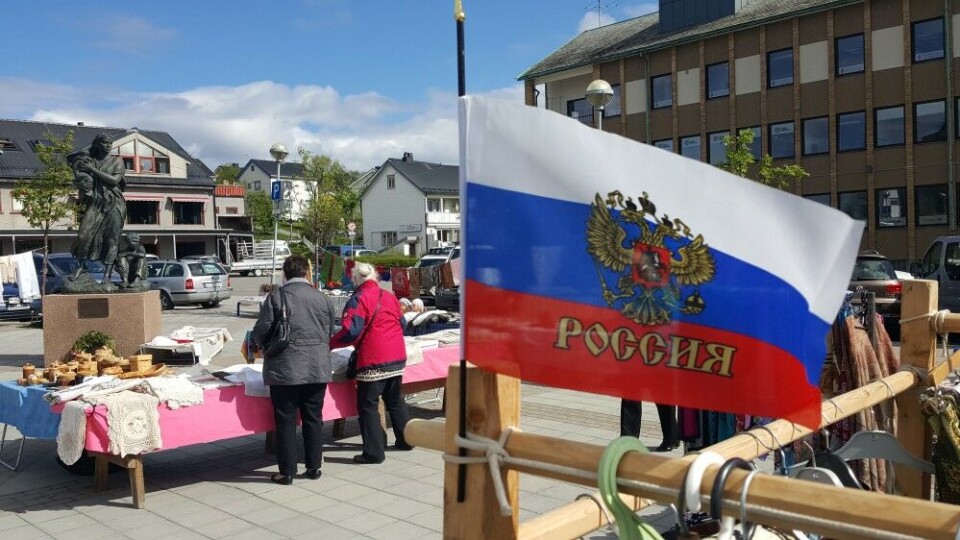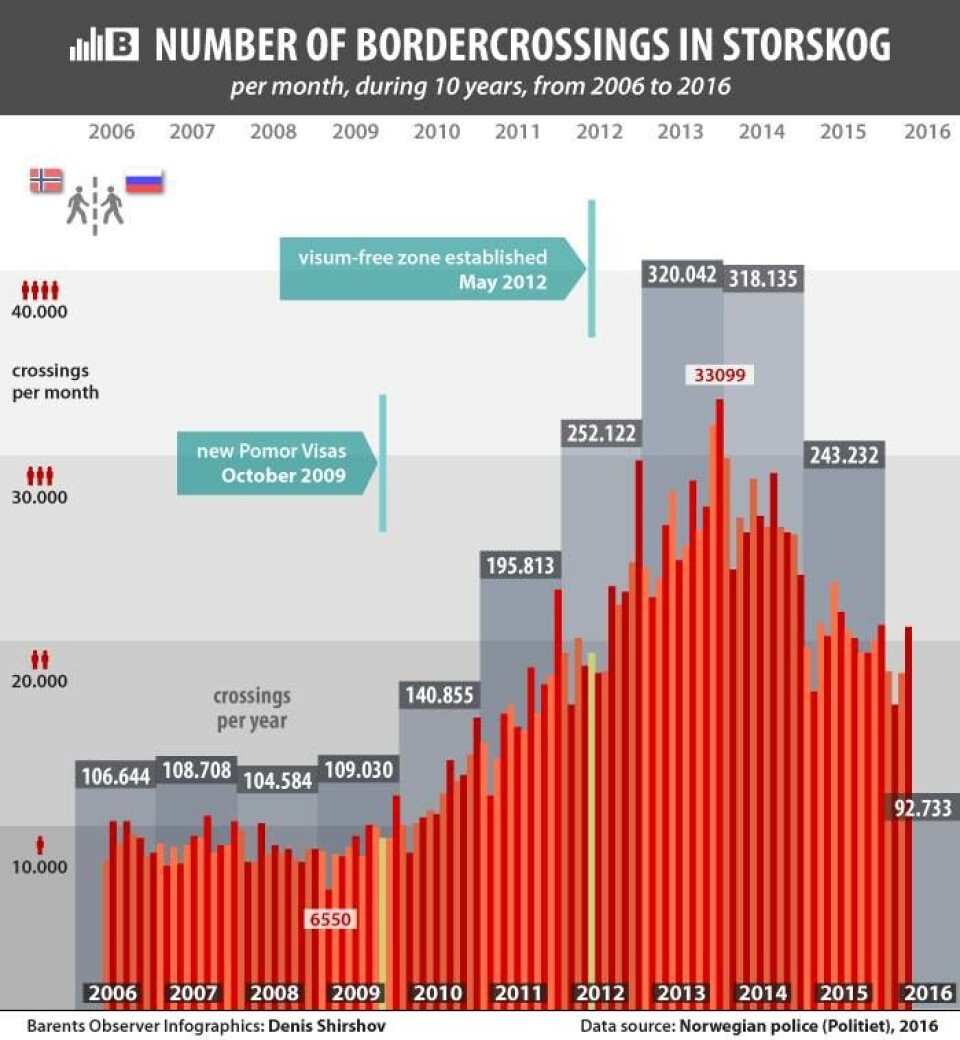
Lowest number of border crossings since Soviet times
Record low number of travelers across the Norwegian-Russian border came as no surprise. 2021 was totally dominated by travel restrictions caused by the pandemic.
“The total for 2021 was 14,752 crossings at Storskog,” writes immigration officer Sven Arne Davidsen in an email to the Barents Observer.
That is down 76% compared with 2020, a year also dominated by the pandemic but with a high number of border-crossers in January and February. Alarm bells for a possible spread of COVID-19 up north were triggered in early March 2020 when Governor of Murmansk, Andrey Chibis, urged the region’s inhabitants to refrain from traveling to the neighboring countries, that be Norway and Finland.
A few days later, Norway introduced lock-down and the border has since then seen very few travelers. Mainly truck-drivers and crew on Russian fishing vessels at port in Kirkenes or other harbors in northern Norway.
In all of 2021, less people crossed the Norwegian-Russian border than in January 2020 when 21,880 crossings were counted.

Not since the name of the country was Soviet Union in 1991 have so few people crossed the land border with Norway. The figure, though, is not directly comparable. During summer 1991, thousands of tourists traveled by sea between Kirkenes and Murmansk onboard a catamaran with daily departures.
In 1990, more than 8,000 border crossings took place, as Kremlin started to lift restrictions for its own people to travel abroad.
In 1992, the first year after the collapse of the Soviet Union, more than 80,000 border crossers were counted, of which 60,000 came from the Russian side. With Norway imposing restrictions on Russian street traders in 1993, the number of border crossers was halved that year.
Since then, the number claimed steadily until 2014 and 2015, when Moscow’s annexation of Crimea was followed by a collapse in the value of the ruble, making a hard hit for people in the Murmansk region traveling to the Norwegian border town of Kirkenes shopping.

















